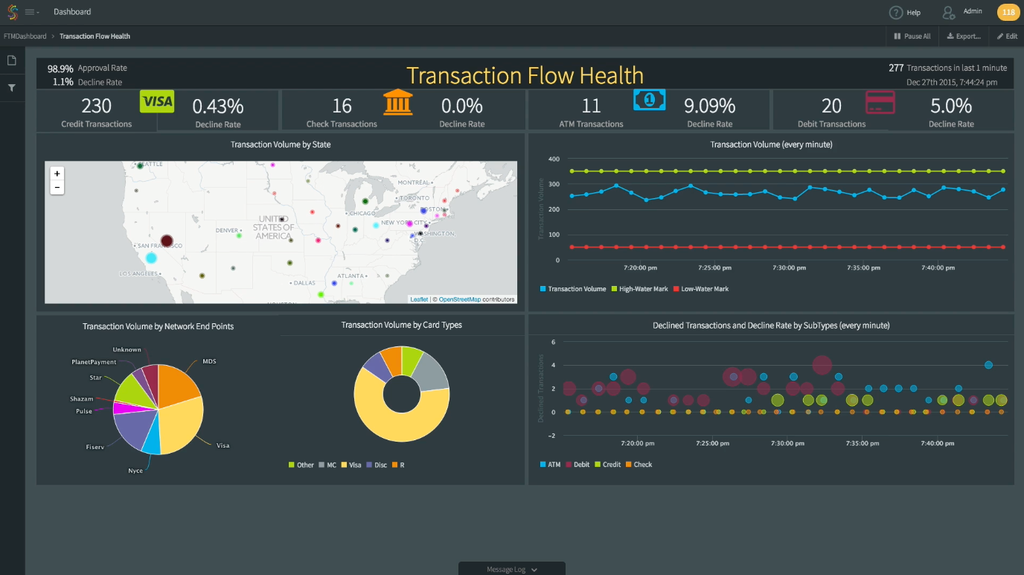Building complex, financial transaction monitoring applications used to be a time-consuming task. Once you had the business case worked out, you needed to work with a team of analysts, DBAs and engineers to design the system, source the data, build, test, and rollout the software. Typically it wouldn’t be correct the first time, so rinse and repeat.
Not so with Striim. In this video you will see a financial transaction monitoring application that was built and deployed in four days. The main use case is to spot increases in the rate at which customer transactions are declined, and alert on that. But a whole host of additional monitoring capabilities were also built into the application. Increasing decline rates often indicate issues with the underlying ATM and Point of Sale networks, and need to be resolved quickly to prevent potential penalties and decline in customer satisfaction.
The application consists of a real-time streaming dashboard, with multiple drill-downs, coupled with a continuous back-end dataflow that is performing the analytics, driving the dashboard and generating alerts. Streaming data is sourced in real time from a SQL Server database using Change Data Capture (CDC), and used to drive a number of analytics pipelines.
The processing logic is all implemented using in-memory continuous queries written in our easy to work with SQL-like language, and the entire application was built using our UI and dashboard builder. The initial CDC data collection goes through some initial data preparation, and is then fed into parallel processing flows. Each flow is analyzing the data in different ways, and storing the results of the processing in our built-in results store to facilitate deeper analysis later.
If you want to learn how to build complex monitoring and analytics applications quickly, take 6 minutes to watch this video.





